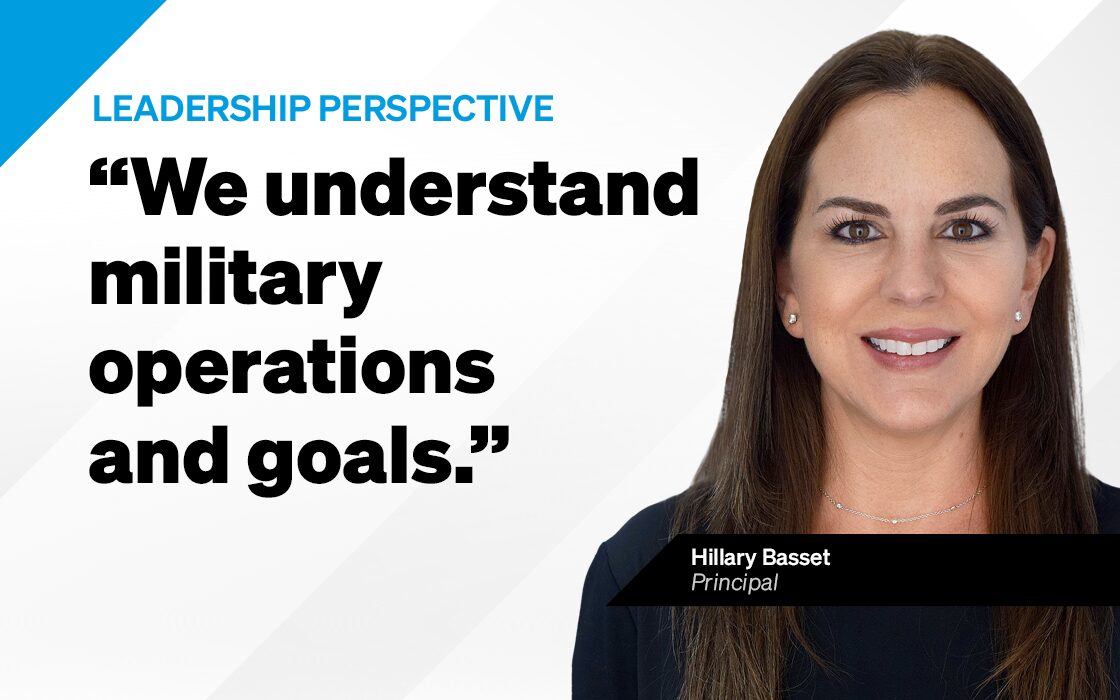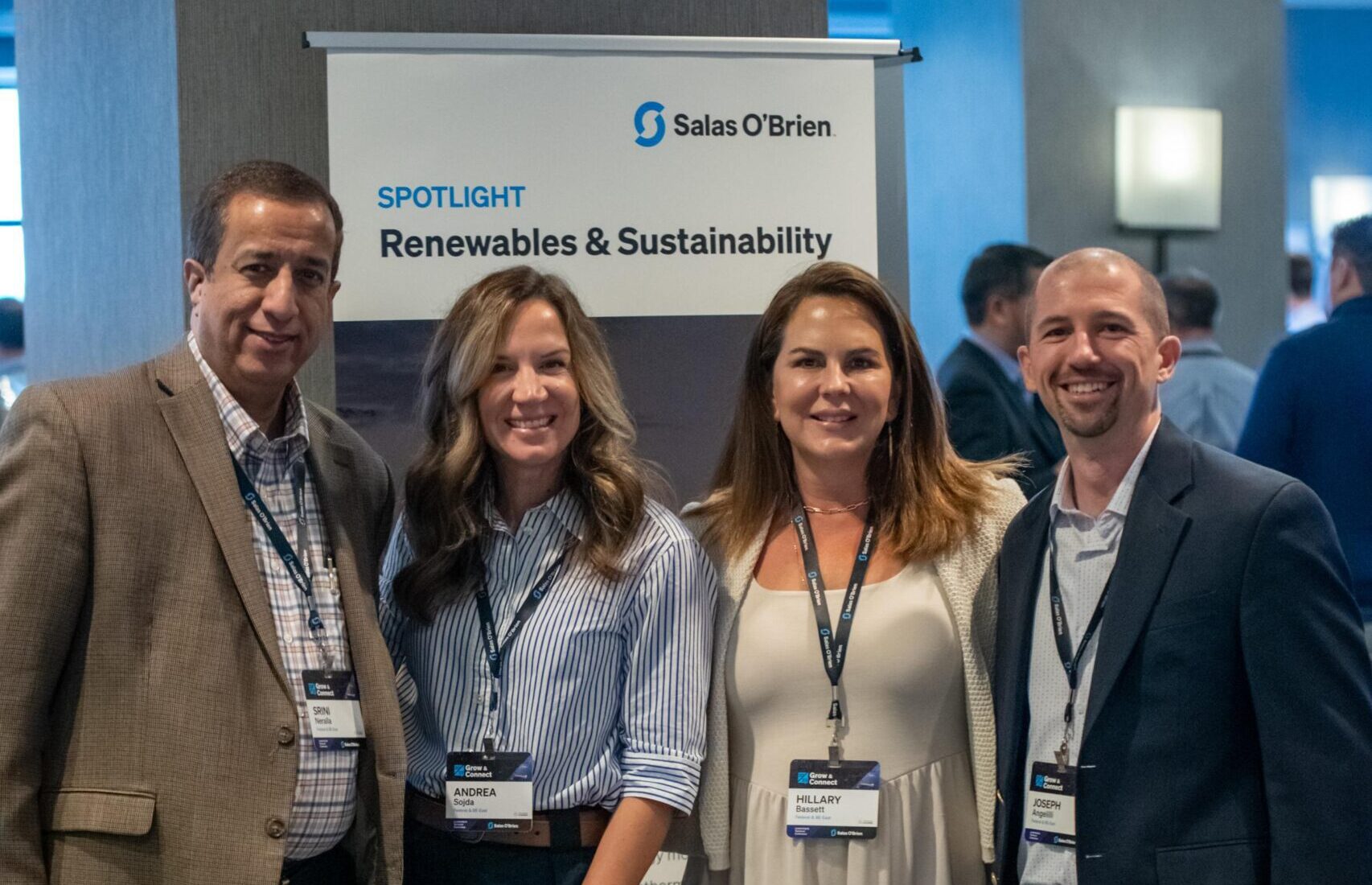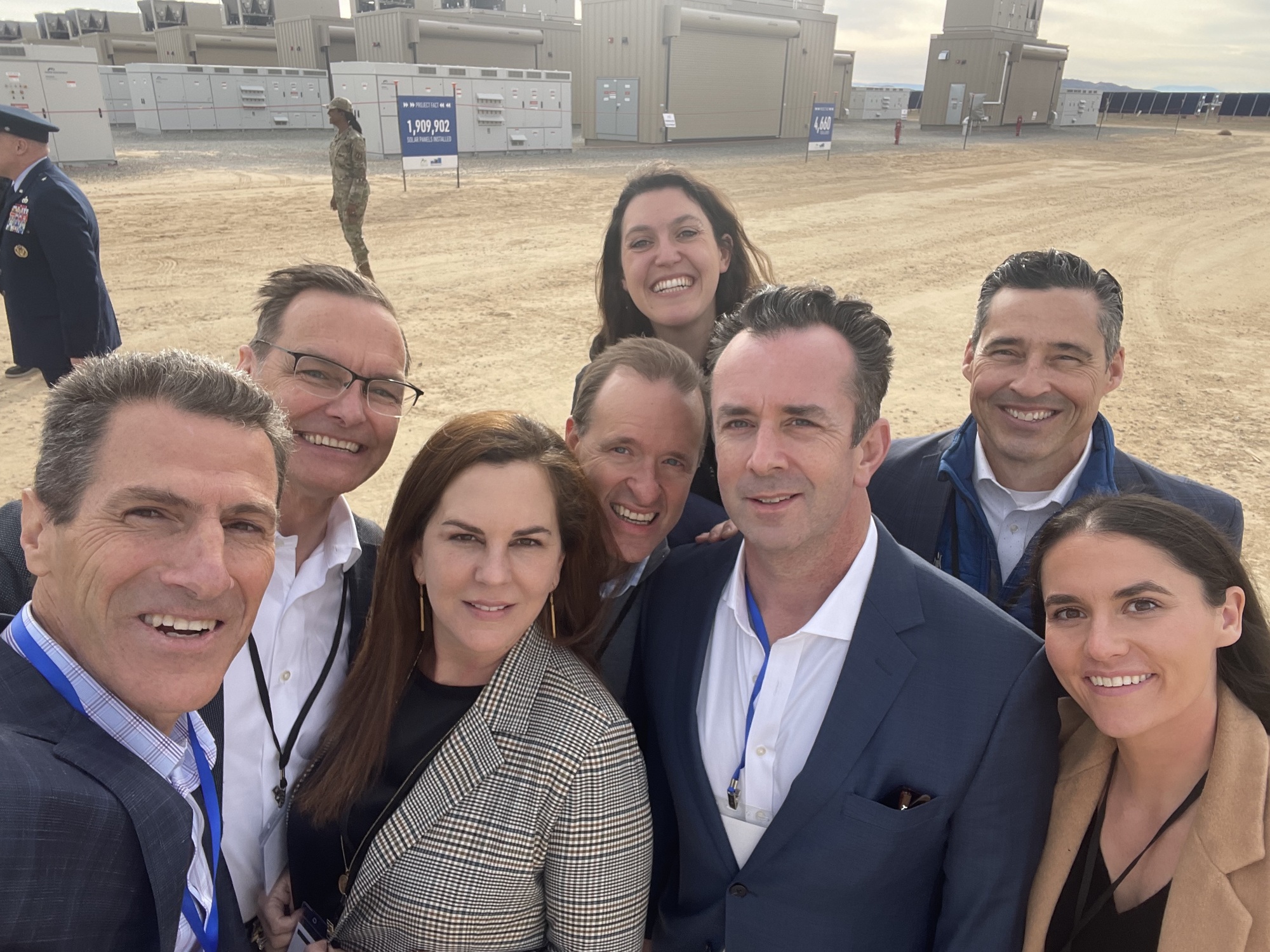News & Insights
Enhancing military operations with partnerships and resilient energy solutions: A Q&A with Hillary Bassett
Hillary Bassett shares how she and the Salas O'Brien team are making a positive impact in the federal sector through resilient energy and strategic partnerships.

With over two decades of military experience, including time as a reservist in both the U.S. Navy and U.S. Air Force in the Pentagon, Hillary Bassett has unique perspective on U.S. military installations. In her role as a Principal with Salas O’Brien’s federal team, she’s leveraging her background to support the Department of Defense, paving the way for innovative partnerships, including energy solutions and resilient infrastructure.
Hillary sheds light on the challenges and opportunities facing military installations and how Salas O’Brien is leading the charge in delivering specialized services to meet their evolving needs.
What type of work do you and the federal team at Salas O’Brien do for the military?
Our work for the military spans a wide range of areas, all aimed at supporting their mission readiness and sustainability goals. One of the key aspects of what we do is helping military installations facilitate successful public-private partnerships that support fiscal goals while providing greater efficiencies and energy resilience.
This is in response both to increasing operational threats and to a heightened focus by the Department of Defense on leveraging existing assets—such as land, buildings, runways—to return value and reduce overall operations costs under constrained budgets. We develop solutions to maximize that value, which can be realized in many ways including payment in kind, military construction, and services. We partner with the DoD to assess viable options and bring the deals to close in a way that benefits all parties involved—the military, the surrounding communities, and private enterprises. We’ve been a part of some of the biggest transactions across the services.
We have led the way for a myriad of partnerships—Enhanced Use Leases, Real Property Exchanges, Utility Privatization, Intergovernmental Support Agreements. As the lead support for partnerships to the Army, Navy, and Air Force, we leverage best practices as well as drive enterprise-wide solutions. It’s a very exciting part of Salas O’Brien’s work.

How has your military background influenced the work you do?
I started out as a reservist in the Navy and then the Air Force, and worked at the Pentagon for over 20 years both as a reservist and as a contractor. It was a privilege and an honor to work alongside some of our nation’s brightest talent. While the Pentagon may be known as the tough-to-navigate Puzzle Palace, it is indeed a place where visionaries work tirelessly to ensure the nation’s safety. I recall the general officer in charge of Intelligence for the Joint Staff (the J2) popping into our office at 0300 (the middle of the night) as we prepared the morning intelligence briefing for the Secretary of Defense. And the entire staff on standby to work through the night as we prepared for congressional hearings.
I grew up professionally in the Pentagon, which gave me an appreciation for the development of strategic direction and the importance of the supporting policies that drive our military’s success. I also witnessed firsthand the critical importance of community relationships, in particular in securing the energy resilience needed to ensure the operational readiness of our military installations. While my work in the Pentagon was largely focused on Air Force installations, I’m excited to now work across all branches of our military.
Can you explain the significance of energy resilience in military operations?
We’ve witnessed a paradigm shift in energy management within the military. The DoD has realized that energy efficiency and conservation are important, but what we really need is resilience. By this I mean energy availability when and where we need it, ensuring continuity of mission-critical functions in the face of both man-made and natural threats. We are seeing firsthand an exponential increase in instances, with extreme climate change and threats like cyberattacks.
This is compounded by our aging infrastructure. The impact of which extends well beyond our military clients and even our own borders. This is a global issue as much as it is a national one. All of our cities and communities have infrastructure and assets that are aged past their usefulness, as do our military installations.
It’s a big problem to get around, with direct impact to energy and water availability. We recognize the significance of this challenge and are committed to supporting our military clients in overcoming it.
Can you share an example of a project Salas O’Brien has undertaken for the military with these goals in mind?
The photovoltaic solution implemented at Edwards Air Force Base is one we take a lot of pride in. It’s a very exciting project for the country and actually earned recognition from the White House.
Edwards Air Force Base is located in Southern California. It’s a massive base with a lot of available land, in a vast area with both high energy costs and limited supply. For nearly a decade, the base had contemplated installing a solar array to monetize their land. However, unlike private ventures where communication and decision-making are streamlined, there are a lot of inherent complexities with moving a big government project forward. Salas O’Brien was brought in to leverage our industry contacts and experience to navigate the procurement process and help the developer and Air Force speak the same language.
From the initial stages of source selection to project management, our team guided the procurement and implementation processes, ultimately overseeing the successful completion of the largest photovoltaic-battery storage project in North America. This landmark project has over 2 million solar panels and can produce up to 1,300 megawatts of power and is expected to reduce greenhouse gas emissions for the base by roughly 800,000 metric tons while providing sustainable power for over 200,000 homes in the neighboring communities.

What makes Salas O’Brien uniquely positioned to support federal clients in this capacity?
It comes down to our team. We have the right people on board with the right background and expertise to successfully develop and close a project—stakeholder engagement, knowledge of authorities, finance, environmental, legal, public affairs.
The key to it all begins with stakeholder engagement and understanding requirements on both sides of the fence, meaning the needs of the public and the private stakeholders involved, inside the installation and outside within the community. We have a deep understanding of all sides and are always striving for a win-win.
We’ve worked on some of the largest transactions within the DoD, often with unique funding aspects and stakeholder needs. Having this vast knowledge of how different issues have been addressed in different communities and understanding the regulations and authority that it takes to move projects of this nature forward is a big differentiator. We also understand what is needed to get something funded through military funding, including what type is required—what the DoD calls the different “colors of money.”
We can help channel not only how the deal can be brokered, but how proceeds from the deal can be channeled to best support the local installation as well as the broader service.
How does Salas O’Brien stay abreast of evolving policies and technologies to better serve its military clients?
We track where things are going and what’s happening on the Hill, staying abreast of where congress is going with their thinking, and where the administration is going. The upcoming presidential elections are certainly top-of-mind for us and our DoD clients. When administrations change priorities shift, but everyone agrees that resilience is important.
You’re attending the upcoming JETC (Joint Engineer Training Conference). What do you hope to gain from this event?
JETC is a great opportunity for technical training and education and for staying connected with senior leaders across the service. For me, that’s the real value of the conference.
This is an opportunity for us to both learn about where the leaders are going and what their needs are and to share our vast experience and how we are uniquely positioned to support them. As I mentioned before, we have led the way for partnerships. We understand military operations and goals, the importance of energy resilience, and know how to get real estate deals done to move complex projects forward.